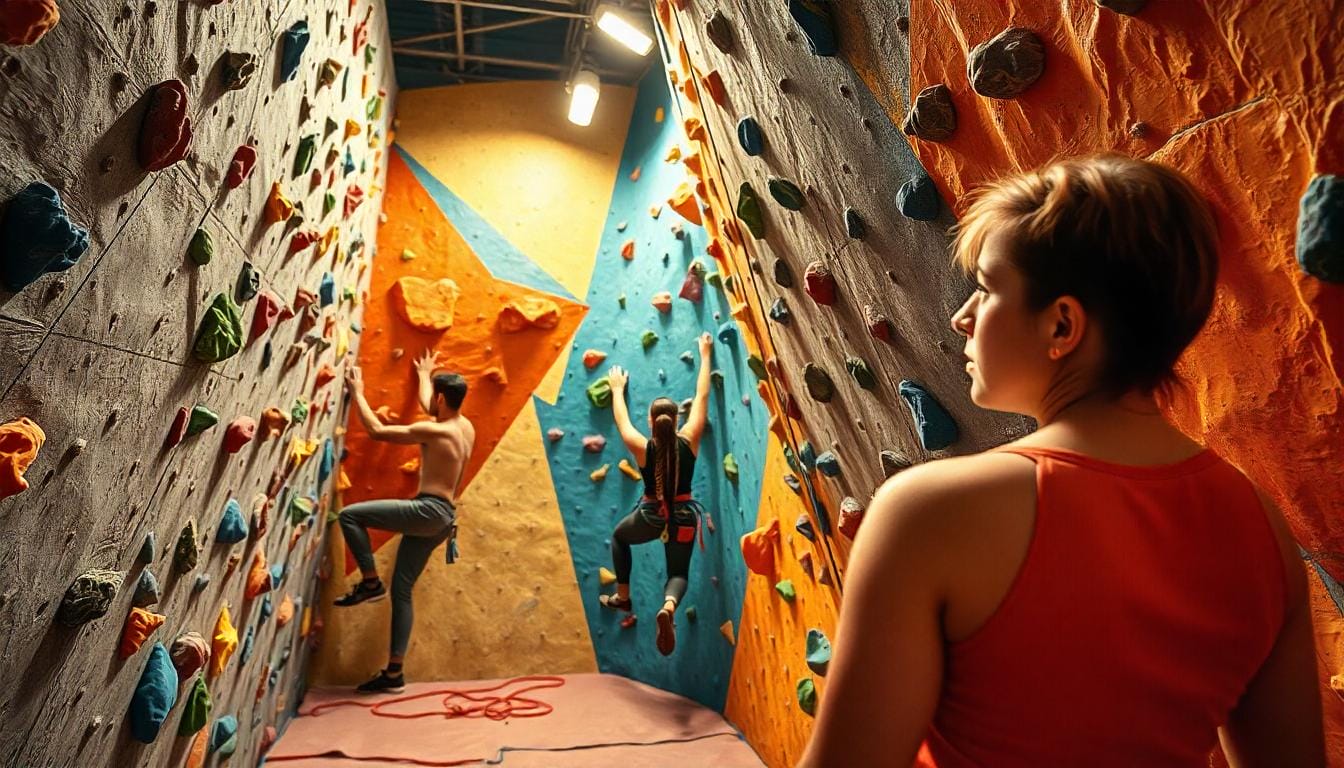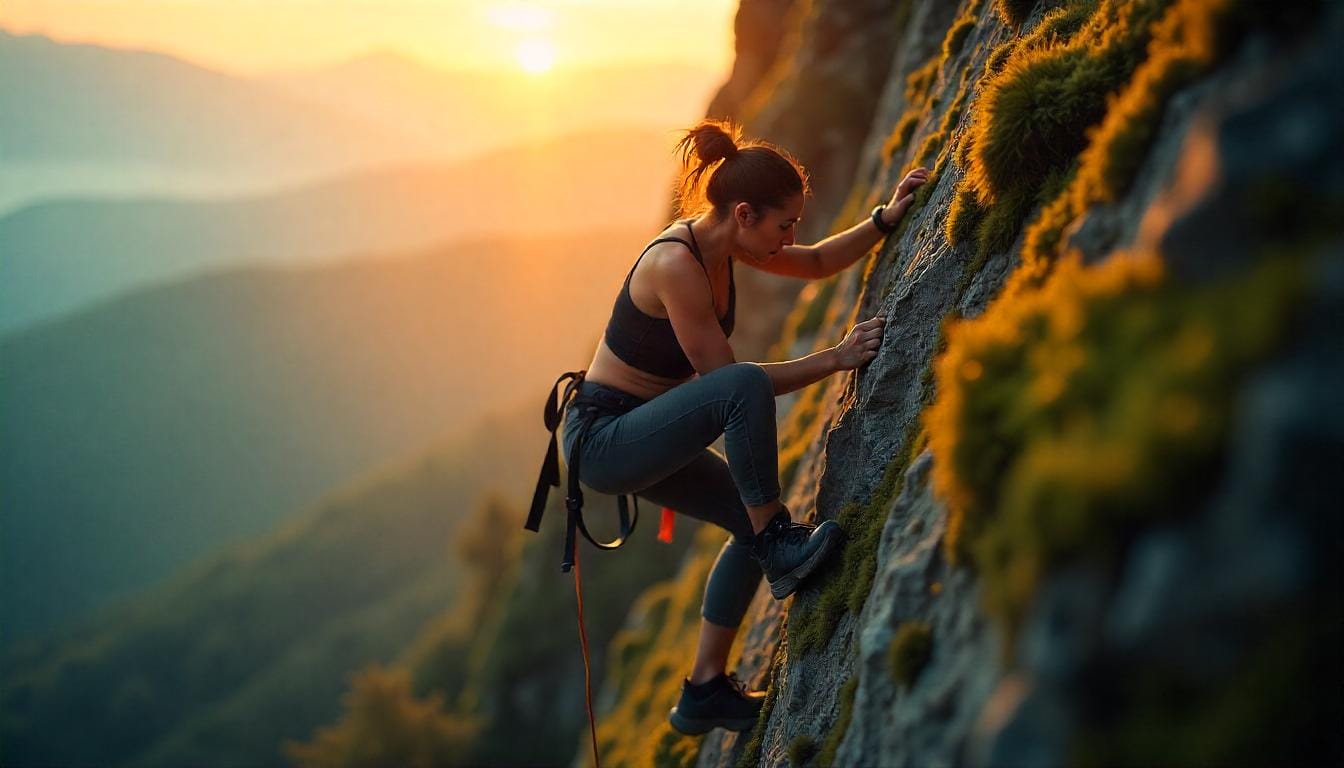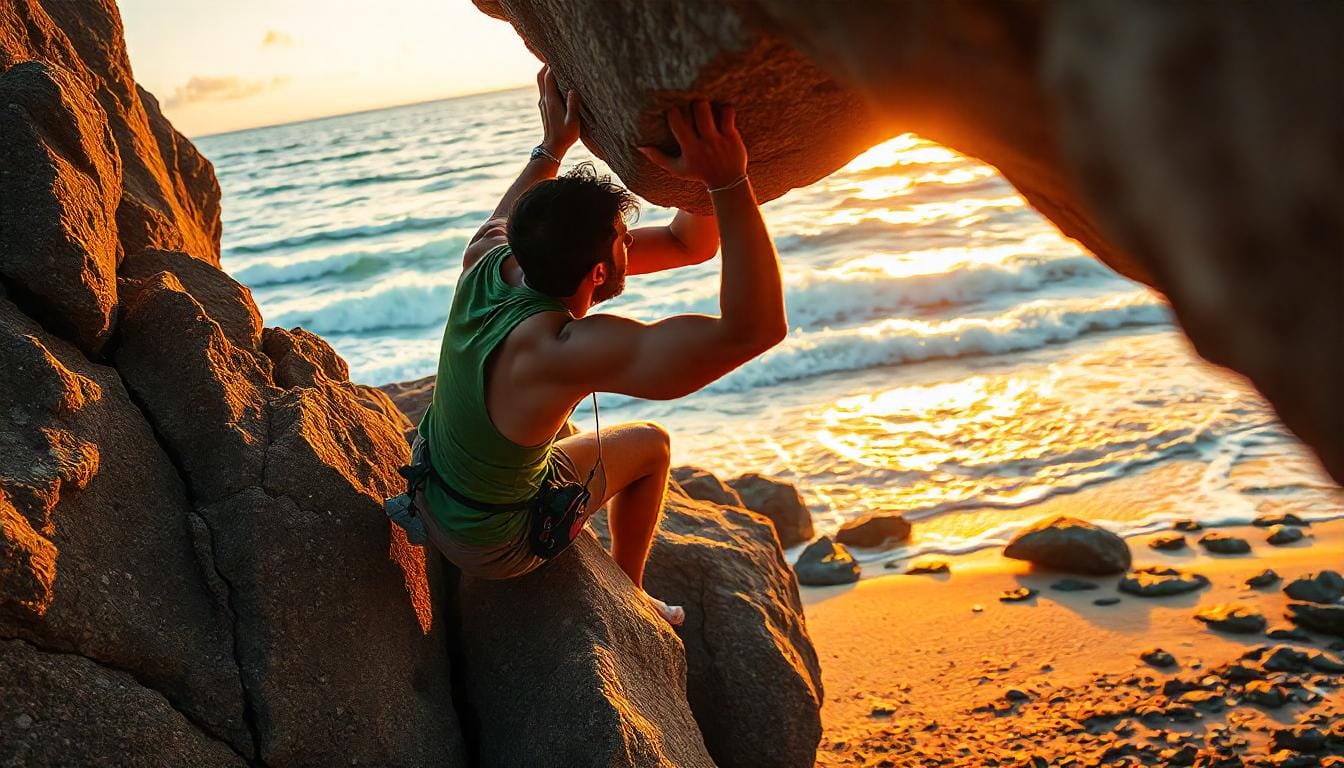Indoor vs outdoor bouldering presents exciting choices for climbing lovers. Bouldering is a fun way to climb without ropes, and it can be enjoyed in a gym or on real rocks outside. Each option has its own unique charm. Indoor climbing gyms provide safety and reliable holds, making it great for practice. On the other hand, outdoor climbing offers a thrilling experience surrounded by nature and fresh air. Whether someone prefers the controlled environment of a gym or the wild beauty of the outdoors, both styles have something to offer. Keep reading to discover more about bouldering and what makes each option special!
Key Takeaway
- Indoor bouldering is safer and has clearer routes, making it great for beginners.
- Outdoor bouldering offers a tougher challenge but adds the beauty of nature.
- Climbers can enjoy both styles, each with its unique fun and learning.
Understanding Indoor Bouldering
Climbing walls at indoor gyms is a fun way for people to get some exercise. The gyms have fake rocks on the walls called holds that climbers can grab onto. The holds come in lots of different shapes and colors to show climbers where they can climb. This helps new climbers just starting out learn how it works.
One reason indoor climbing is safe is because the gyms make it that way. They put soft, squishy mats on the floor to catch people if they fall off the wall. This helps climbers feel okay about trying hard stuff without getting hurt. The gyms also set up different climbing paths called routes climbers can take. The routes go from easy to super tricky so climbers can find ones that match how good they are.
Another great thing is climbers can go bouldering indoors even when it’s yucky weather outside. They don’t have to worry if it’s raining or snowing because they can climb inside. Many gyms have contests too which can be really fun. Climbers get to meet new people and cheer for each other while they climb (1).
Exploring Outdoor Bouldering
Going outside to climb real rocks and cliffs is called outdoor bouldering. It’s different from indoor climbing because real rocks come in all sorts of shapes and textures. No two climbs are ever the same! Climbers have to use different moves and skills on natural rock.
Outdoor climbing can be more tricky. The handholds outside aren’t as obvious as they are in the gym. Climbers really have to think hard about their next move. The weather can make it harder too. Rain or wind can make the rocks feel different and less safe to climb.
Being safe is super important when climbing outside. Climbers need to bring special gear like crash pads. Crash pads are big soft mats to cushion a fall if a climber slips. Climbing outdoors also lets people enjoy cool views of nature while they climb. Overall, outdoor bouldering is a fun thrill-ride that mixes climbing with the beauty of the great outdoors (2).
Comparing Difficulty Levels
Credits : Walrus Climbing
Indoor and outdoor climbing are graded very differently. Usually, outdoor climbs feel way harder than indoor ones. Studies show outdoor bouldering problems often seem about two grades tougher. So a V3 climb inside might feel more like a V5 outside on real rocks.
This happens because of the different rock types and holds. Indoor gyms have holds made to be safe and consistent. This lets climbers practice moves without slipping too much. But outside, climbers deal with natural rock. The texture and shapes of outdoor holds change a lot. So climbers have to adapt their skills as they go.
Many climbers love how outdoor bouldering pushes them to get better. It’s exciting to take on the challenge of real rock. At the same time, indoor bouldering builds confidence before going outside. By practicing indoors first, climbers can work on their skills to be ready for tougher outdoor climbs (3).
Equipment Needs for Each Style
The gear climbers need is different for indoor and outdoor bouldering. Inside a gym, climbers don’t need a lot of extra stuff. The gym keeps people safe with soft mats on the floor. So climbers can just focus on climbing well without worrying about falling. All they really need are good climbing shoes to grip the holds.
Outside is different. Safety becomes way more important. Outdoor climbers need crash pads to make falls less rough. Crash pads are portable mats put on the ground to cushion a fall. If a climber slips, the pad helps make the landing soft.
Outdoor shoes need to be tougher too. They have to handle real bumpy rocks. Climbers should pick shoes that fit right and give good support. Having the right gear helps climbers be safe and have more fun climbing.
So each type of climbing has different equipment needs. Climbers should always get ready with the right stuff for indoor or outdoor adventures. That way they’ll be prepared to climb their best!
Community and Culture
Both indoor and outdoor climbing help create a community feeling among climbers. At indoor gyms, the mood is usually friendly. Gyms host events and contests so climbers can meet each other and share stories. This builds teamwork and support to help everyone get better.
Outdoor climbing builds a different community. Climbers connect with each other out in nature. They trade tips on techniques and find new spots to climb together. Many outdoor climbers love enjoying the natural world while they climb. Sharing these experiences brings climbers close.
Both places offer chances to learn and grow. Indoor gyms are great for beginners to practice safely. Outdoor climbing lets people challenge themselves in new areas. No matter where they climb, the community unites climbers through their passion for the sport.
Learning and Skill Development
Indoor bouldering helps climbers work on specific skills. The routes in gyms target different techniques. Climbers can practice footwork, balance, and strength without getting distracted. Indoor climbing is a great way for beginners to safely learn the basics.
Outdoor bouldering challenges climbers in different ways. The natural routes aren’t marked like in gyms. Climbers have to figure the best path themselves. This can be exciting and builds confidence in their abilities. Outdoor climbing also requires flexibility. Climbers adapt to different rocks and conditions while finding safe holds.
Over time, climbers can enjoy both indoor and outdoor climbing. Each one teaches something valuable. Indoor focuses on technique. Outdoor builds adaptability. Both help climbers grow in skill for the sport.
Finding Climbing Areas
Finding places to climb can be easy or tricky, depending on if someone likes indoor or outdoor bouldering more. Indoor climbing gyms are in many towns and cities. They’re usually pretty easy to find, so climbers can practice whenever they want. Most gyms also have classes for beginners, making it simple to start climbing.
On the other hand, finding outdoor spots takes some more work. Climbers may need to search online or ask others about good areas. Famous outdoor climbing spots include places like Bishop or Yosemite. It’s important to know the rock quality and difficulty before going.
Safety is a big deal when climbing outside too. Climbers should check the weather and make sure conditions are okay. This means looking out for rain or other hazards. By taking time to get ready, climbers can make sure they have a fun and safe time, whether climbing indoors or outdoors.
FAQ
How does climbing indoors compare to the great outdoors when it comes to route finding and grades?
Indoor routes are color coded and clearly marked, making them easier to follow. Outdoor routes require more skill in route finding as you need to spot natural features and chalk marks. Many climbers find outdoor grades feel harder than indoor ones, even at the same level. This is because outdoor climbing presents unique challenges like varied rock types and environmental factors.
What makes indoor facilities ideal as a training ground compared to outdoor settings?
Indoor climbing gyms offer a controlled environment perfect for learning year round. Route setters create varied climbing routes that help you practice specific techniques. The artificial walls have consistent foot holds and are brightly colored, making them great for building confidence. You’ll find everything from top rope to lead climbing setups.
Why do experienced climbers say outdoor rock climbing involves more mental and physical challenges?
Outdoor climbing presents unique obstacles you won’t find in a climbing gym. You’ll face real rock features, loose rock, and need to master gear placement for safety. The mental game is different too – you’re dealing with natural features rather than artificial walls, and multipitch climbs require more focus and planning.
What types of climbing gear do you need when transitioning from indoor to outdoor rock climbing?
While indoor facilities provide most equipment, climbing outdoors requires your own safety gear. Beyond basic climbing gear like ropes and harnesses, you’ll need additional equipment for trad climbing and sport climbing. The climbing experience outdoors demands more preparation, especially when dealing with outdoor grades and varying rock faces.
How do local climbing communities help new climbers transition from climbing indoor to outdoor boulders?
Climbing partners from local climbing communities often introduce newcomers to outdoor routes. They share knowledge about outdoor bouldering grades, help find climbing route options, and teach essential outdoor climbing techniques. This mentorship from experienced climbers helps ensure safe practices whether you’re top roping or free soloing at places like Horse Pens.
What safety considerations should beginners know when moving from indoor to outdoor climbing?
Environmental factors like weather and rock type can affect your climbing experience outdoors. While indoor facilities offer a controlled environment, outdoor climbing requires more attention to safety. Always check for loose rock and proper gear placement before climbing. Having experienced climbing partners is crucial for safety.
Why do some routes feel harder when climbing outdoors versus indoors?
Natural features and rock faces create unique challenges that make outdoor routes feel more difficult. While indoor climbing offers consistent grading systems, outdoor grades often feel more challenging due to factors like irregular rock features and varying rock types. The mental aspect of climbing outdoors also adds to the difficulty.
What makes indoor and outdoor climbing unique in terms of accessibility and practice opportunities?
Indoor facilities allow climbers to practice year-round regardless of weather. They’re perfect for learning fundamental climbing techniques with clearly marked routes. Outdoor climbing offers a more adventurous experience but depends on weather and location. Each setting has its own grading systems and climbing offers different learning opportunities.
Conclusion
Indoor and outdoor bouldering each have their own benefits. Indoor bouldering provides safety, set routes, and a welcoming community. Outdoor bouldering offers adventure, challenges, and a chance to connect with nature. Climbers can enjoy both experiences, learning and improving their skills along the way. Ultimately, the choice between the two comes down to personal preference and goals. Both styles are fun and exciting for climbers of all levels!
References
- https://www.wistv.com/2024/07/08/lets-try-indoor-rock-climbing/
- https://www.thebmc.co.uk/en/bouldering-outdoors-for-the-first-time
- https://www.visitpa.com/article/rock-climbing-and-bouldering-experiences-pa






